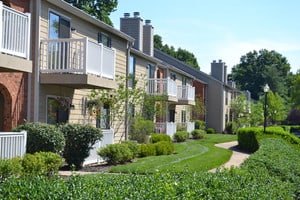Rental Apartments Starts Gobbling More Market Share From Condos

The National Association of Home Builders analyzed quarterly data from the Census Bureau, which noted 76,000 rental multifamily starts and 3,000 condo starts.
“Condo construction has been weak since the end of the Great Recession,” said the report, written by Robert Dietz.
For comparison, starts of apartments have been about 90% or higher since late 2014. Since then, they’ve bounced in the low to mid-90s but don’t appear to have reached 96% before, according to an NAHB chart included with the report. The chart includes data all the way back to 1990.
Apartment starts bottomed out in Q3 2005, when condo construction was booming. At that time, it hit 47%.
Rental multifamily starts traditionally have held more market share over condos. From 1980-2002, the average market share for apartments was 80%, according to NAHB.
While more apartments are going up, their square footage is staying down, according to NAHB. The average square footage of rental units during the second quarter of this year was 1,126, well below the pre-Great Recession peak of about 1,300. In early 2015, square footage reached a post-recession peak of 1,247 square feet.
Depressed dwelling sizes may not last long, according to NAHB.
“Multifamily unit size may increase in the quarters ahead, as a market response to the coronavirus recession,” the report says.
Though apartments took more market share from condos, apartment construction is down this year. The RENTCafe Blog says COVID-19 has reduced apartment construction by 12%.
“The downtrend is mainly due to the slower pace of construction, as a result of a shortage of available construction crews, funding and permits, along with some temporary bans on construction projects in certain states,” the report said.
Housing construction overall, however, is driving up lumber prices, NAHB said in a different report. The price of lumber has shot up 110% since mid-April.
“[The association] estimates that these recent gains have boosted typical new single-family home prices and apartment prices by approximately $14,000 and $5,000, respectively,” according to the report.
Pricing of multifamily has not so far been affected much by COVID-19, according to brokers at James Capital Advisors. “You are still getting pre-COVID values for a lot of properties, depending on the real estate and operations,” said Mike Hanassab, a senior director at the sell-side brokerage. “That is the opposite of the perception.”
source: globest.com















 Accessibility
Accessibility